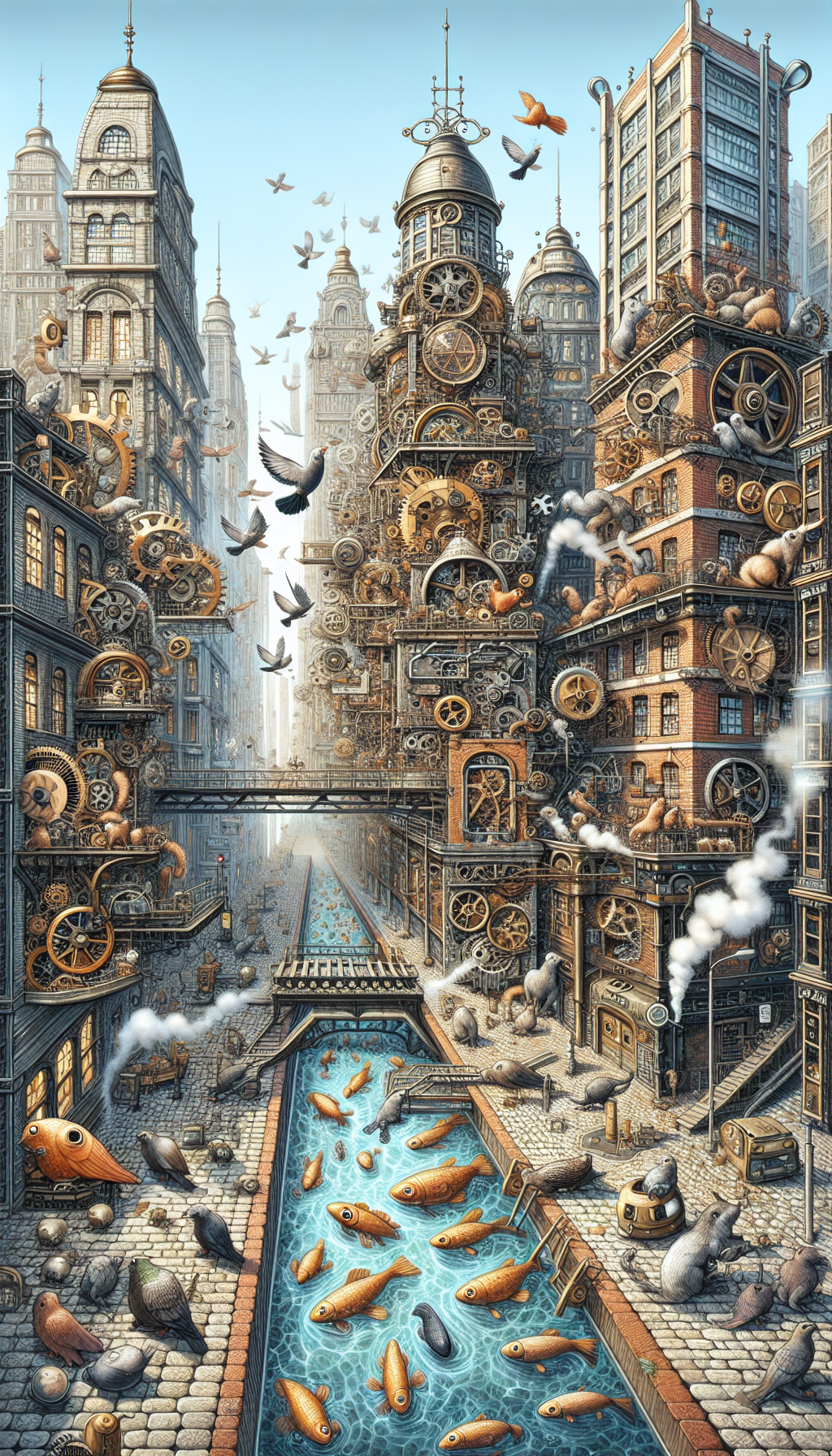Urban areas are often viewed as concrete jungles, far removed from the natural world.
However, if you take a closer look, you’ll realize these bustling cities are teeming with wildlife.
From raccoons exploring neighborhood trash cans to birds of prey soaring above skyscrapers, urban wildlife has adapted to coexist in our modern world. By understanding their lives, we can appreciate their contribution to our urban ecosystems and the vital role they play in promoting biodiversity.
The one constant in nature is change, and wildlife species have displayed their resilience by adjusting to life in our urban landscapes.
They’ve become resourceful, leveraging the opportunities that city life provides. These animals have navigated the maze of man-made structures, surviving, and even thriving, amid the steel and concrete.
Raccoons, for instance, have attained near-celebrity status in some cities.
Known for their crafty ability to get into almost anything, these creatures have adapted remarkably well to the urban environment. They rummage through garbage bins for food and have even been known to use pet doors to gain access to houses. Similarly, foxes have been spotted more frequently in cities, often seen darting through parks or across streets in the early hours of the morning.

On the other hand, the skies above our cities are also teeming with life. Birds such as hawks, falcons, and pigeons have found high-rise buildings to be the perfect nesting grounds, mirroring the cliff faces and tree canopies they would naturally inhabit.
The urban environment provides plenty of food options for these avian dwellers too, from scavenged scraps to the abundance of urban pests they prey upon.
Urban wildlife is not limited to mammals and birds. Cities are also home to a wide array of insects, reptiles, and amphibians. The humble city park, often the only green space within a sea of concrete, is a hotspot for biodiversity.
Here, one can find everything from butterflies and bees pollinating flowers, to frogs residing in park ponds, to squirrels scurrying up trees.
However, as intriguing as urban wildlife is, it’s not without its challenges. Human-wildlife conflicts are a common issue, and the survival of these creatures often depends on how well we manage our interactions with them. Simple measures such as securing trash cans and keeping our pets indoors at night can help mitigate these conflicts. We must also consider wildlife when planning urban developments, ensuring they have green spaces to thrive and corridors for safe passage.
In addition, fostering a sense of wonder and curiosity about urban wildlife among city dwellers is crucial for its conservation. After all, how can we care for what we do not know or understand? Encouraging observations of urban wildlife, whether it’s birdwatching from a balcony or spotting raccoons on a nighttime stroll, can lead to an increased appreciation for these urban survivors.
Urban wildlife adds a layer of richness and complexity to our city living experience, fostering a connection between humans and nature amidst the hustle and bustle of city life. They remind us that even in the most concrete of jungles, life finds a way. By recognizing and respecting their presence, we can ensure a future where humans and wildlife can thrive side by side in the urban landscape. Despite our differences, we are all part of the intricate dance of life in the city.